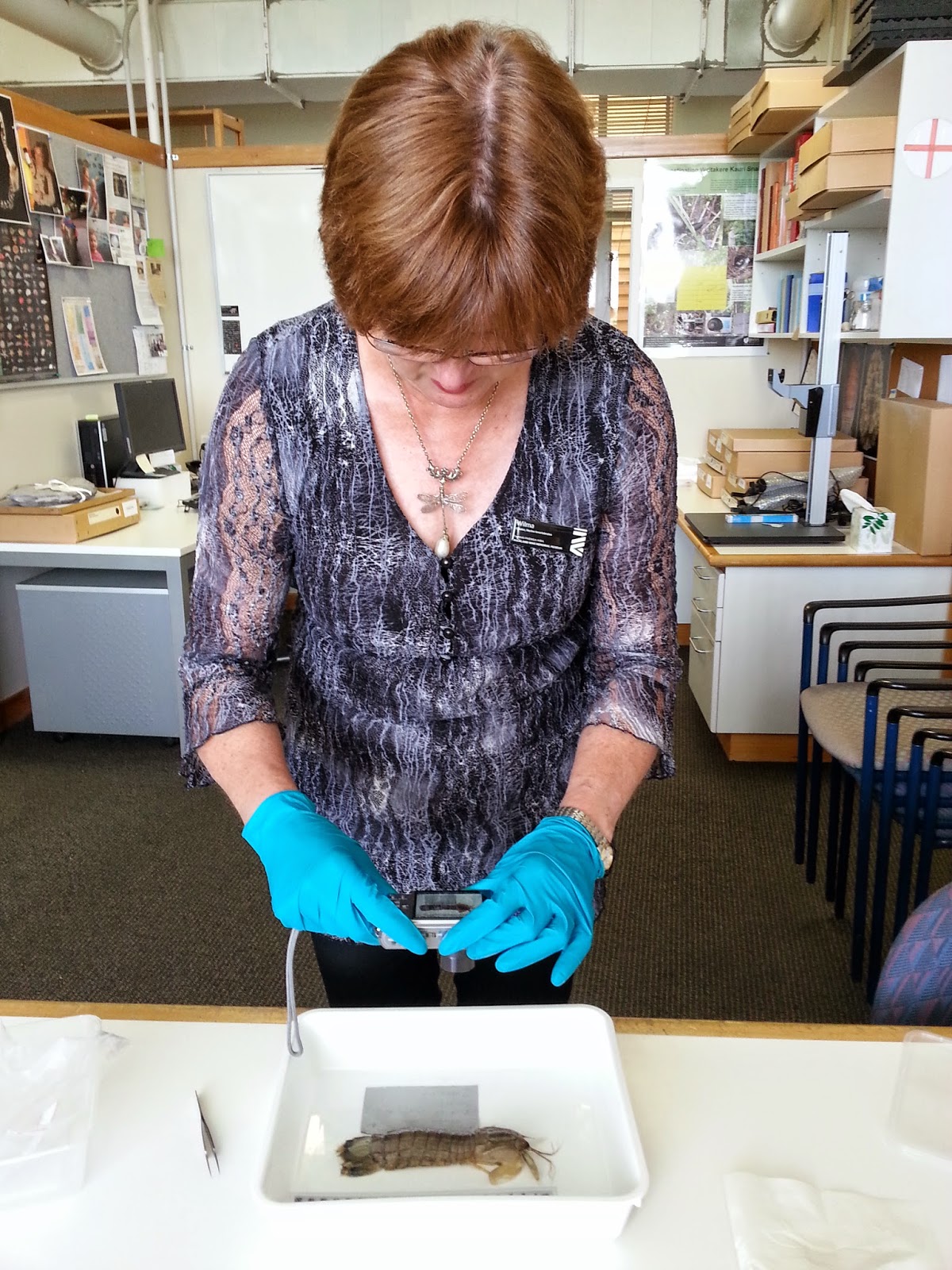In the museums they keep what they call "skins" of birds. Birds are being preserved by keeping only the skin and stuffing this. Most birds at Auckland Museum have been put on a stick. Here is my favourite rosella. I like it because it is one of the brightest birds in the collection, and it's got a small black feather among the red ones on its chest.
I have been taking a variety of measurements to find out whether the Eastern rosella has changed over the years it has been in New Zealand. You might know that animals adapt to different environments, although this happens very slowly over a long time. For example penguins who live closer to the south pole have shorter legs and wings.
What I found out is that the wing length of the rosella in New Zealand is shorter than the wing length of the rosella in Australia. This might be because New Zealand is colder than Australia, and Eastern rosellas have adapted to decrease heat loss. "Might" is a very important word here, as not many people have researched the Eastern rosella in New Zealand, and there could be many other reasons for the difference in wing length.
This is one of the reasons scientists have to work together. From each research project many new questions arise, and just one scientist would never be able to answer all these questions.
Here I am using a special measuring instrument for birds. It is a wing ruler with a stop.








.JPG)


.JPG)
.JPG)





